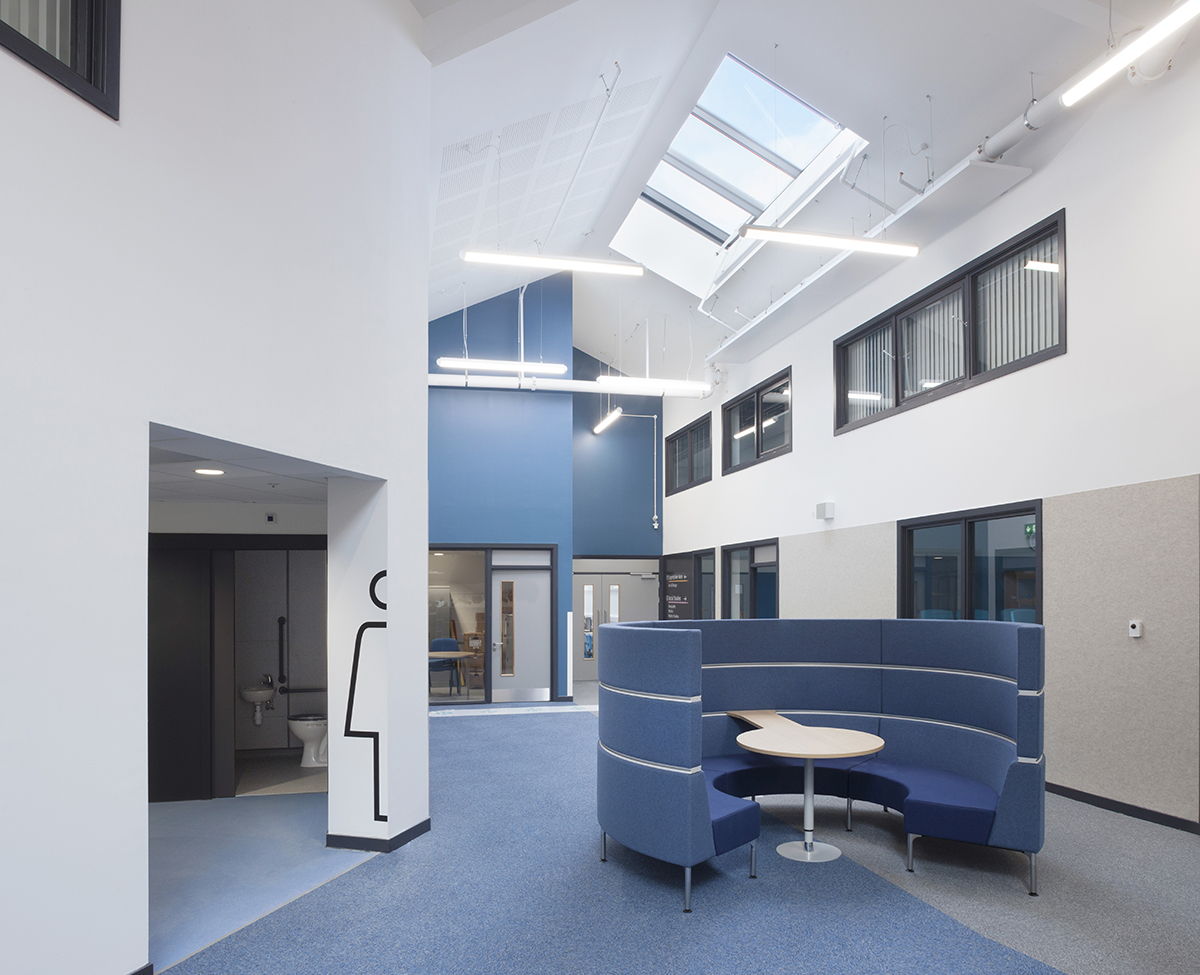
CARBON and quality are two of the main considerations when it comes to building modern schools in Scotland, according to Craig Bridges, strategic business director at GRAHAM.
The contractor has delivered over £600 million worth of projects in the education sector in Scotland, encompassing both new build and refurbishment school ventures, nurseries, and university buildings.
GRAHAM is currently onsite at Ross High in East Lothian where the firm is delivering a significant extension, having recently completed a refurbishment and extension project in the region at Gullane Primary. The contractor has also commenced work on an extension to Boroughmuir High School for the City of Edinburgh Council.
Other notable Scottish projects GRAHAM has carried out over the years include the £26.5 million Dalbeattie Learning Campus in Dumfries & Galloway, the £34 million Port Glasgow Shared Campus in Inverclyde, and the £28 million Earlston High School in the Borders.
Craig said the £1 billion Learning Estate Investment Programme, managed on behalf of the Scottish Government by the Scottish Futures Trust, has resulted in more focus on sustainability.
“The funding is predicated on being able to demonstrate cost savings in the energy use of the schools over a ten-year period,” he explained. “That’s a good shift because there was always a drive (in the past) on reducing costs and reducing programmes. That creates all sorts of issues for everyone. The focus now seems to have moved towards quality and carbon. I think that transition has been a good one.”
Craig added that a ‘fabric first’ approach is utilised to make schools as energy efficient as possible, with factors such as insulation and airtightness taking on added importance. Designing and constructing the schools to be efficient can go a long way towards minimising the running costs, though Craig stressed how crucial it is for environmental measures to be factored in from the word go from the perspective of both the client and designer.
“We get more and more focused now on where the materials come from; if there is embodied carbon; what the costs are of getting them here,” he explained. “We are more aware of that, but many of the decisions in a school are made right at the outset. If some of these things aren’t captured early, either through the client not being up to speed or the designer not being up to speed, sometimes it’s too late.”
One aspect driving the construction and design considerations of new schools is research highlighting the importance of a wide range of factors – from daylight to outdoor learning – which can contribute to a more positive and inspirational experience for students.
The modern approach includes more flexible teaching spaces and breakout areas.
While no one can predict with any great certainty what technologies might emerge in the future which change the learning approach – limiting the potential to completely future-proof schools – there are obvious advantages in designing facilities which maximise use of all areas for teaching and promote more widespread community use, including outside of traditional school hours.
“It costs a lot to build a school and it costs a lot to run it,” Craig added. “So, the question is: are we getting the maximum bang for our buck? Are we using all of the school? For the most part, the guys do a tremendous job in trying to make use of their schools. But as the learning world changes, that may become a different driver.
“There’s a lot of research throughout the world into things like natural light and the learning environment. A whole lot of factors appear to make attainment improve. I think it’s very important that when schools are being designed and constructed that these things are factored in, as so far as they can, to try to make the learning environment one where the students will thrive.
“One of the clients we worked with a few years ago had the message that the learners should be at the heart of everything we do. It’s something we try to think about when we’re approaching schools. Essentially, it’s all about delivering an environment where students can learn in a place where they feel comfortable.”
Craig cited the Dalbeattie Learning Campus project as a great example of where collaboration and early engagement resulted in a hugely successful end result.
GRAHAM was tasked with delivering a new-build shared learning campus comprising a nursery, primary school, secondary school, and community facilities. The work took place whilst the previous school remained operational, with the project winning a 2018 Partnership Award in the Best Social Infrastructure project category.

“This was very much a community-driven project,” Craig recalled. “We were fortunate enough to get involved very early. We worked closely with all the local stakeholders. It went through planning without one objection. It’s a school that’s been very well received by the incumbent students. It’s an example of collaboration, working together with those providing the education to get the right product.”
One noteworthy aspect of delivering new and refurbished education projects is the unique opportunity it presents for construction firms to introduce the industry to young people – especially as the work is often carried out in close proximity to ‘live’ school environments.
With skills shortages well documented and much debate about where the next generation of construction workers will come from, Craig revealed that GRAHAM is passionate about highlighting the potential careers that are available.
“We’ve been fortunate in some of the projects that we’ve been able to provide information to teachers and other learning professionals about routes into construction,” he said. “One of the biggest challenges we have as an industry is that we need to make it feel like it’s a destination of choice for people. We try to explain you can do everything in construction from labourer to lawyer. If there’s something you want to be, you can probably do it in construction. Just creating an awareness of what the opportunities are is very important.”








